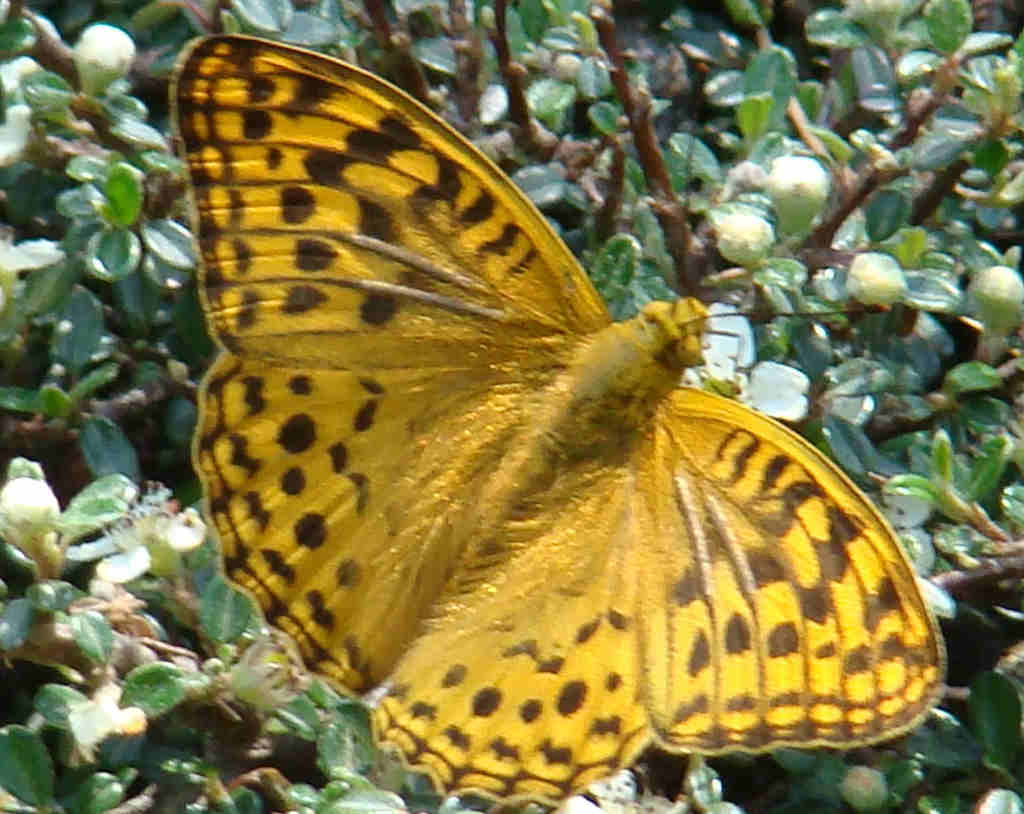
Phalanta phalantha (Common Leopard)
Phalanta phalantha, commonly known as the Leopard Butterfly, is a striking butterfly species found within the biodiverse forests of the Great Himalayan National Park (GHNP). This medium-sized butterfly is instantly recognizable by its bright orange wings, scattered with irregular black spots that resemble a leopard’s coat—hence its name.
| Common Name | Common Leopard |
| Scientific name | Phalanta phalantha |
| Family | Nymphalidae |
| Description |
In GHNP, Phalanta phalantha thrives in open forest clearings, sunlit trails, and grassy slopes ranging between 1,000 to 2,500 meters. It is a sun-loving butterfly, often seen basking with its wings open, warming itself in the early morning or after cloudy spells. This behavior makes it a popular sight for early bird hikers and butterfly watchers. The butterfly is active from spring through late autumn, coinciding with the blooming of wildflowers. It primarily feeds on nectar from a variety of plants and is known for its quick, fluttery flight. During courtship and territorial displays, its energetic flight patterns become even more pronounced. The female Phalanta phalantha lays eggs on plants of the Flacourtiaceae family, such as the Indian cherry (Flacourtia indica). The caterpillars feed on the leaves until pupation, eventually emerging as the vivid adult butterflies that are an important part of GHNP’s ecosystem. Ecologically, Phalanta phalantha is a valuable pollinator and a key indicator of healthy forest habitats. Its presence supports the biodiversity of GHNP and underlines the importance of conservation in the region. For more butterfly species found in GHNP, explore Papilio polytes and Graphium sarpedon. |



